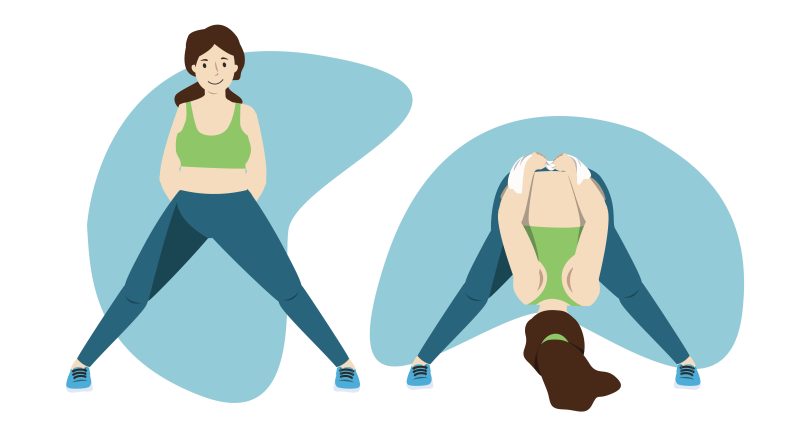
In the world of fitness and athletics, achieving peak performance is the ultimate goal. Athletes and fitness enthusiasts alike constantly seek ways to improve their workouts and maximize their results. While physical training is undoubtedly crucial, there’s another tool that’s often overlooked but can make a significant impact – the power of visualization. In this article, we will delve into the science and practice of visualization and how it can enhance your workout performance.
The Science Behind Visualization
Visualization, also known as mental imagery or mental rehearsal, is the process of creating a mental image or scenario in your mind. It’s not just daydreaming; it’s a deliberate and systematic mental practice. Scientific research has shown that when you vividly imagine performing a physical activity, your brain activates the same neural pathways as it would if you were actually performing that activity. This fascinating phenomenon has several implications for workout performance.
- Improved Motor Skills
Visualization can enhance motor skill development. When you mentally rehearse a movement or exercise, your brain sends signals to the muscles involved, reinforcing the neural connections required for that movement. This means that practicing a movement mentally can help improve your form and technique, which is essential for preventing injuries and optimizing results.
- Increased Confidence
Visualization can boost confidence levels. By repeatedly visualizing successful workout sessions and achieving your fitness goals in your mind’s eye, you build confidence in your abilities. This mental confidence can translate into improved performance in the gym or on the field.
- Enhanced Focus and Concentration
Visualization can sharpen your focus and concentration. During a workout, distractions can be detrimental to performance. By visualizing your routine beforehand, you prepare your mind to stay focused on the task at hand, ignoring distractions and pushing through mental barriers.
- Stress Reduction
Visualization is an effective stress-reduction technique. Many athletes and fitness enthusiasts experience pre-workout jitters or anxiety. can help calm the nervous system, reduce anxiety, and create a sense of mental preparedness for the workout ahead.
How to Harness the Power of Visualization
Now that we understand the science behind visualization, let’s explore how you can harness its power to enhance your workout performance.
- Set Clear Goals
Start by setting clear and specific fitness goals. Whether it’s lifting a certain weight, running a particular distance, or achieving a specific body composition, having well-defined objectives will give your visualization practice purpose.
- Create a Routine
Incorporate visualization into your daily routine. Find a quiet, comfortable space where you won’t be disturbed. Close your eyes and mentally walk through your workout or training session, focusing on every detail, from your warm-up to your cool-down.
- Use All Your Senses
Engage all your senses in your visualization. Imagine the smell of the gym, the feeling of the weights in your hands, the sounds of your breathing and the gym environment, and the taste of success as you reach your fitness goals. The more vivid and multisensory , the more effective it will be.
- Visualize Success
Always visualize success. Imagine yourself achieving your fitness goals effortlessly. See yourself pushing through challenges and setbacks, emerging stronger and fitter with each workout. Positive visualization can be a powerful motivator.
- Be Consistent
Consistency is key to reaping the benefits of visualization. Make it a daily practice, ideally before your workout sessions. Over time, you’ll notice improvements in your performance and mental resilience.
Benefits of visualization in sport and exercise
Visualization, often referred to as mental imagery or mental rehearsal, plays a significant role in enhancing performance in sports and exercise. Here are some of the key benefits of in these contexts:
Improved Performance:
Visualization allows athletes and exercisers to mentally rehearse their movements, strategies, and routines. This mental practice can translate to improved physical execution during actual competition or training.
Enhanced Confidence:
Visualization helps build confidence by allowing individuals to see themselves successfully completing tasks and achieving their goals in their mind’s eye. This increased self-belief can positively impact performance.
Reduced Anxiety:
Athletes often experience performance anxiety or nervousness before competitions. Visualization techniques can help reduce anxiety by creating a sense of familiarity and control over the situation. It can also be used to mentally prepare for challenging scenarios.
Skill Development:
Visualization can be used for skill development and refinement. Athletes can mentally rehearse specific movements, techniques, or tactics, which can lead to improved muscle memory and coordination.
Injury Recovery:
Visualization can aid in the recovery process for injured athletes. By mentally rehearsing their rehabilitation exercises and envisioning themselves healing and returning to full fitness, individuals can potentially speed up their recovery.
Goal Setting and Achievement:
Visualization helps athletes and exercisers set clear goals and visualize the path to achieving them. When individuals can see themselves reaching their goals, it becomes a powerful motivator.
Focus and Concentration:
Visualization enhances focus and concentration by training the mind to stay on task. This mental discipline can be invaluable during intense training sessions or high-pressure competitions.
Pain Management:
In endurance sports and exercises, athletes can use visualization to manage pain and discomfort. By imagining themselves pushing through challenging moments, individuals can increase their pain tolerance.
Stress Reduction:
Visualization techniques often involve relaxation and deep breathing, which can reduce overall stress levels. Lower stress can lead to better performance and recovery.
Positive Mindset:
Visualization encourages a positive mindset. Athletes can visualize themselves overcoming obstacles, adapting to changes, and maintaining a resilient attitude, which can be crucial during tough times.
Improved Decision-Making:
Visualization can assist in decision-making by allowing individuals to mentally explore different scenarios and outcomes. Athletes can use this to plan strategies and adapt to changing game situations.
Mental Toughness:
Through visualization, athletes can develop mental toughness and resilience. They can prepare themselves for adversity, setbacks, and challenges, helping them stay focused and determined in the face of obstacles.
Consistency:
Visualization can aid in maintaining consistent performance. By mentally rehearsing routines and habits, athletes and exercisers can establish a reliable and repeatable pattern of success.
In summary, visualization is a powerful tool that can be used to enhance various aspects of sports and exercise performance, from skill development to mental resilience. When combined with physical training and proper preparation, can be a valuable asset in achieving success in these domains.
The power of visualization is a tool that can significantly enhance your workout performance. By understanding the science behind it and incorporating it into your fitness routine, you can improve your motor skills, boost confidence, increase focus, reduce stress, and ultimately achieve your fitness goals. So, the next time you hit the gym or step onto the field, remember that your mind can be your most potent asset in achieving peak performance. Start harnessing the power today and watch your fitness journey reach new heights.







Emerson Benson
Lorelei Higgins
Celine Barajas